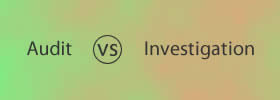Difference between Assets and Liabilities
Key Difference: An asset is something which is owned and controlled by an entity. It is capable of bringing some financial gain in the future. On the other hand, a liability is a present obligation which has to be settled in future.
 In context to accounting standards, assets refer to something which is owned by someone and has the ability to provide economic benefits or profits in the future. There is a long list of assets which can be owned by a person or a company. Some of the common assets are cash, land, building, accounts, etc. It includes both tangible (like land, building, etc.) and intangible items (like customer goodwill) that have a value attached with it. However, these intangible assets are not positioned directly on the balance sheet, still they are considered when one is buying or selling a business.
In context to accounting standards, assets refer to something which is owned by someone and has the ability to provide economic benefits or profits in the future. There is a long list of assets which can be owned by a person or a company. Some of the common assets are cash, land, building, accounts, etc. It includes both tangible (like land, building, etc.) and intangible items (like customer goodwill) that have a value attached with it. However, these intangible assets are not positioned directly on the balance sheet, still they are considered when one is buying or selling a business.
Assets are generally grouped in order of their liquidity which is measured by considering the ease in which an asset gets converted into cash. Therefore, cash is the most liquid among all types of assets.
 On the other hand, liabilities are something which becomes a person or company’s obligation. It is something which has to be paid or done. It is generally the money that the company or a person needs to pay to other as in the case of mortgage or loan.
On the other hand, liabilities are something which becomes a person or company’s obligation. It is something which has to be paid or done. It is generally the money that the company or a person needs to pay to other as in the case of mortgage or loan.
They are generally classified as current or long term types. Current liabilities are those financial obligations which need to be paid within a year or less. It includes monthly operating debts. On the other hand, long term liabilities are generally mortgages or loans which one requires for buying fixed assets and need to be paid off in years.A liability whose outcome is not definite due to its dependency on some future event is known as contingent liability.
Assets and liabilities need to be carefully penned down in a balance sheet. The list of assets and liabilities are positioned in opposite side of each other. It is quite evident that assets exceeding liability reflects success, whereas liabilities exceeding the assets clearly depicts that the entity might be in a problem.
An asset could be anything, but it should be able to generate some profit most likely on a regular basis. On the other hand, liabilities take away money. Assets and liabilities are important for determining the financial position of a company as the owner’s equity is the difference between assets and liabilities. Another difference between assets and liabilities is that assets are prone to depreciation, whereas liabilities are non-depreciable.
Comparison between Assets and Liabilities:
|
|
Assets |
Liabilities |
|
Definition |
Includes everything with a measurable value and owned by an individual or a company. |
Includes everything which an individual or a company owes to a creditor. |
|
Depreciation |
Can be depreciable as well as non-depreciable |
Non depreciable |
|
Positioned on a Balance Sheet |
Left side |
Right side |
|
Increase in the account |
An increase to an asset account is a debit |
An increase to a liability account is a credit |
|
Types |
Tangible assets include land, vehicles, inventory, buildings, equipment Intangible assets include patents, contracts, accounts receivable |
Debts, mortgage, or any financial obligation. These are generally categorized under current or long term. |
|
Criteria |
|
|
|
Economic benefits |
These are probable future economic benefits |
These are probable future sacrifices of economic benefits |
Image Courtesy: recruitingblogs.com, greatnorthernprepper.com









Add new comment